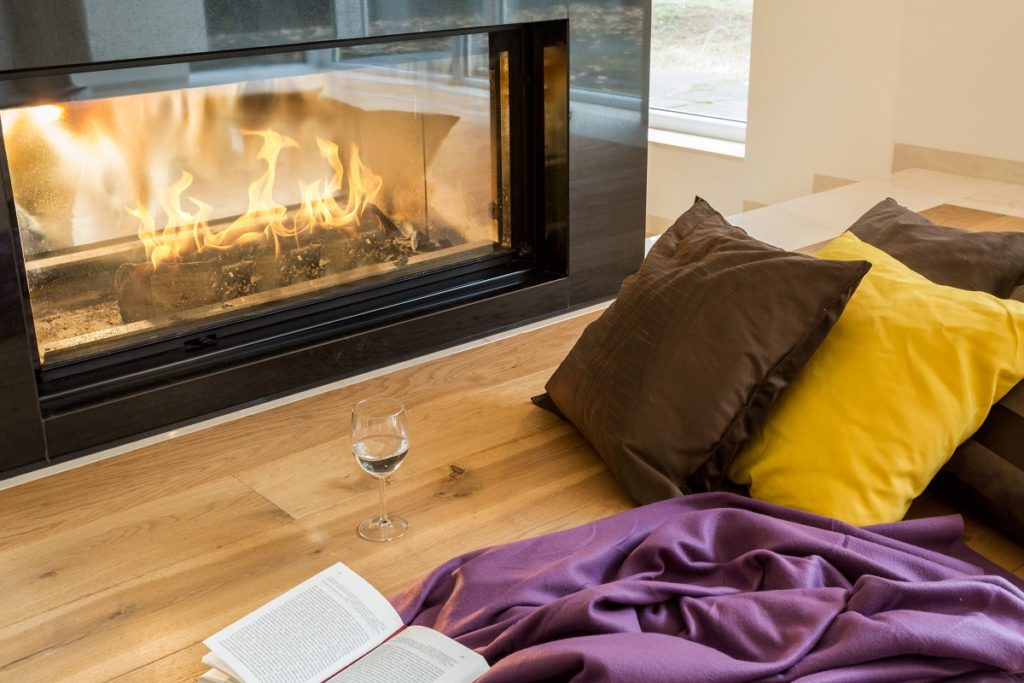A fireplace is the number one amenity most homebuyers look for nowadays. If you do not have a fitted fireplace in your home, it is also possible to have it installed inexpensively. There are different options available for fueling fireplaces, but gas is one of the cheapest and most convenient ones.
Gas fireplaces, unlike wood ones, for instance, have immediate ignition and complete control over their heat output. The fireplaces also have fewer combustion by-products compared to their wooden counterparts.
Gas fireplace installation for your Salt Lake City property will still include different venting options. Venting ensures that your home remains unharmed by poisonous gases and other combustion byproducts. The flue in your venting also safeguards your property against fires by ensuring that the waste gases and combustibles do not come in contact.
Here are your gas fireplace venting alternatives:
Direct Vent
Direct fireplace vents transfer the pollutants from your gas fireplace to the outdoors via an opening to the outside or a chimney. Directly-vented fireplaces should have a sealed glass pane at their front to reduce the chances of pollutants flowing into your indoors, ensure proper combustion, and maintain the system’s efficiency. You can place the vent horizontally or through your roof. Direct venting is the best choice for airtight homes, as it is 70-85% efficient.
Natural Vent
 In other cases, this is called a B-vent. In natural venting, the byproducts from your fireplace are deposited outside via a mortar or brick chimney or a pipe vent installed through your roof. Some systems include a sensor that triggers a fire extinguisher in case the exhaust gas backdrafts and flows down rather than up the flue.
In other cases, this is called a B-vent. In natural venting, the byproducts from your fireplace are deposited outside via a mortar or brick chimney or a pipe vent installed through your roof. Some systems include a sensor that triggers a fire extinguisher in case the exhaust gas backdrafts and flows down rather than up the flue.
The installation of natural vents is inexpensive, offers flexible vent pipe runs, and generates an attractive flame pattern. Unfortunately, the vents are the least efficient with some having an efficacy of just about 20%.
Power Vents
These include a fan along the vents to boost airflow to the exteriors. Power vents allow the installation of long vent runs and can be installed in expansive properties where other options will not suffice. Unfortunately, they are expensive to set up and maintain and are, therefore, not a very popular choice.
Vent-Free Technology
This is the most popular alternative for gas fireplaces these days, owing to its convenience and aesthetic benefit. Vent-free fireplaces do not include a chimney or pipe to the exterior. This allows their placement in virtually all rooms. They are 99% efficient because the heat from the fireplaces remains in the rooms where they are installed. They are designed with sensors, which automatically shut down the fireplace if the oxygen level in the room dips once combustion byproducts rise. Vent-free fireplaces are the recommended option for homes with people suffering from allergies and breathing problems.
The precise amount of heat the above fireplace venting options will leave in your indoors largely depends on your insulation. A fireplace with 40000 BTU will, however, heat a large family room sufficiently. There are different elements used to boost an authentic-looking flame for gas fireplaces. The common ones include lava rock, rock wool, coal beds of sand, and even an aroma of burning wood.

